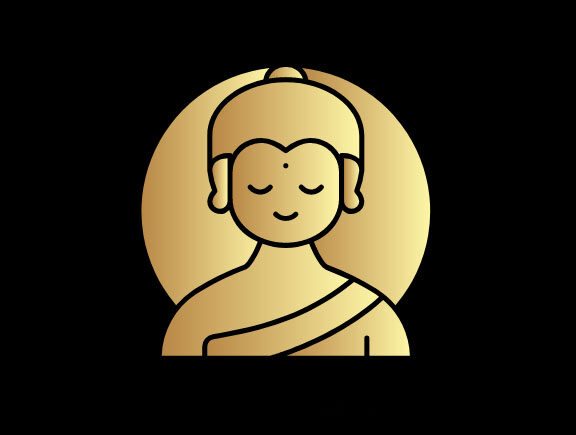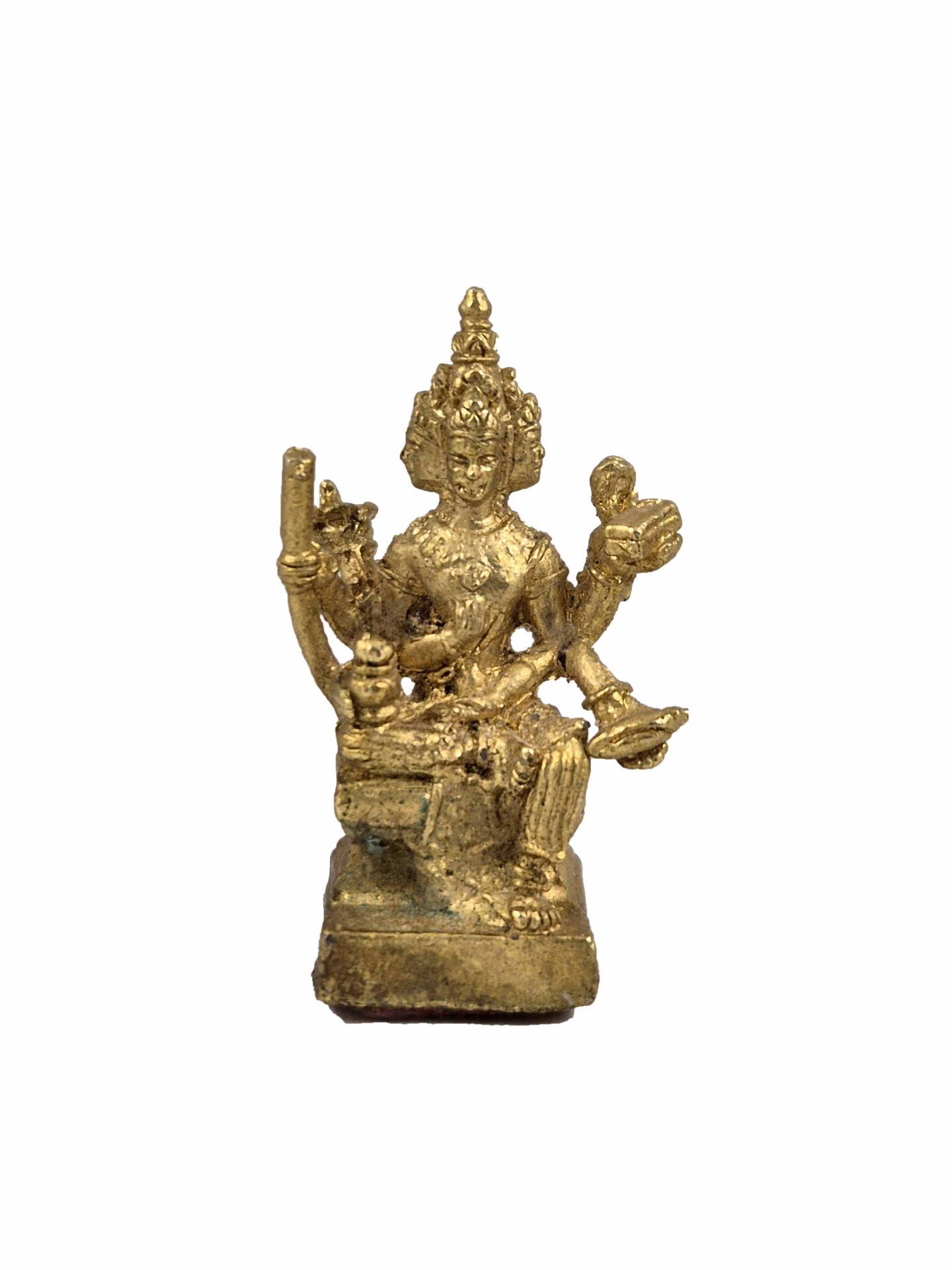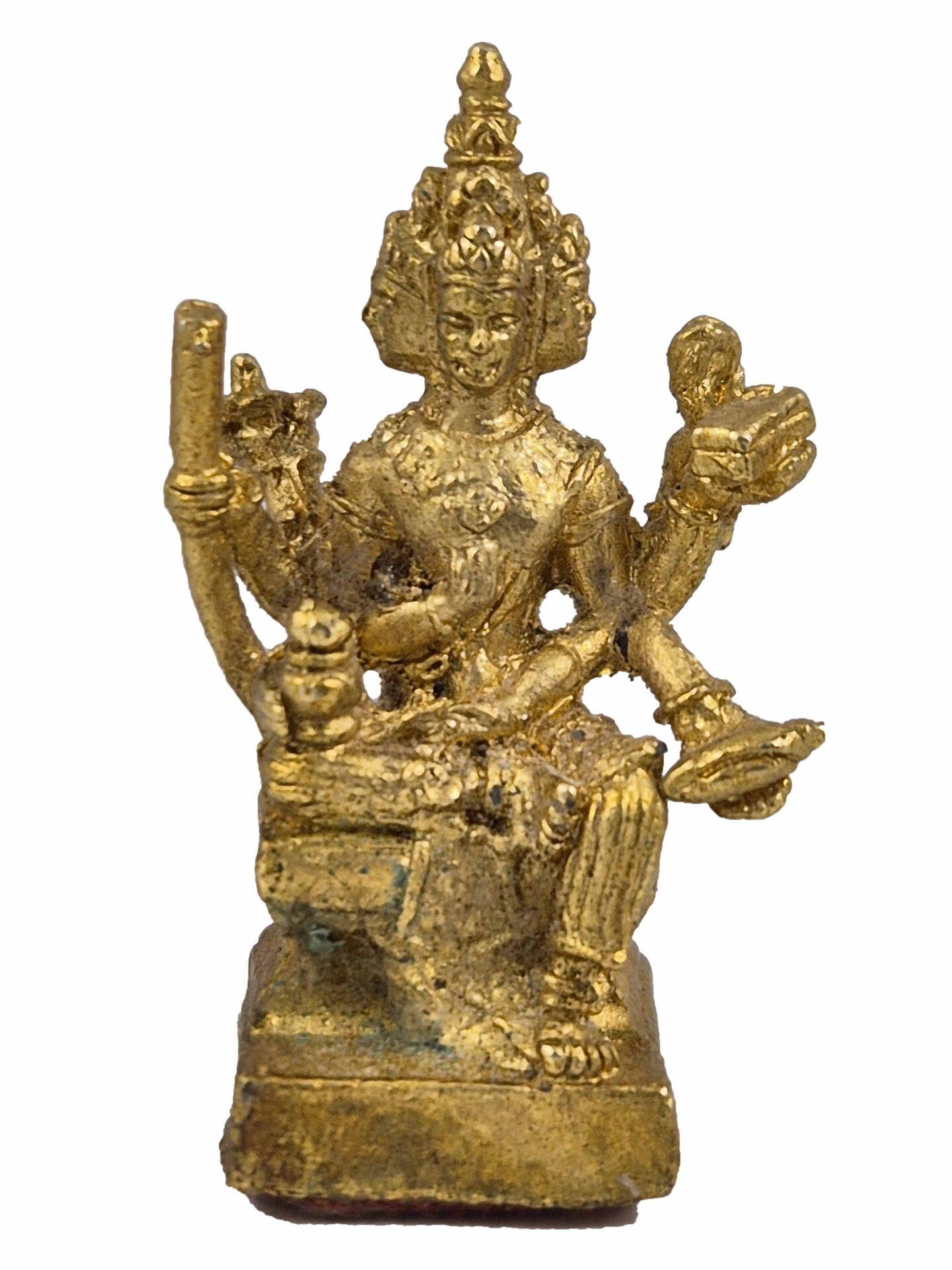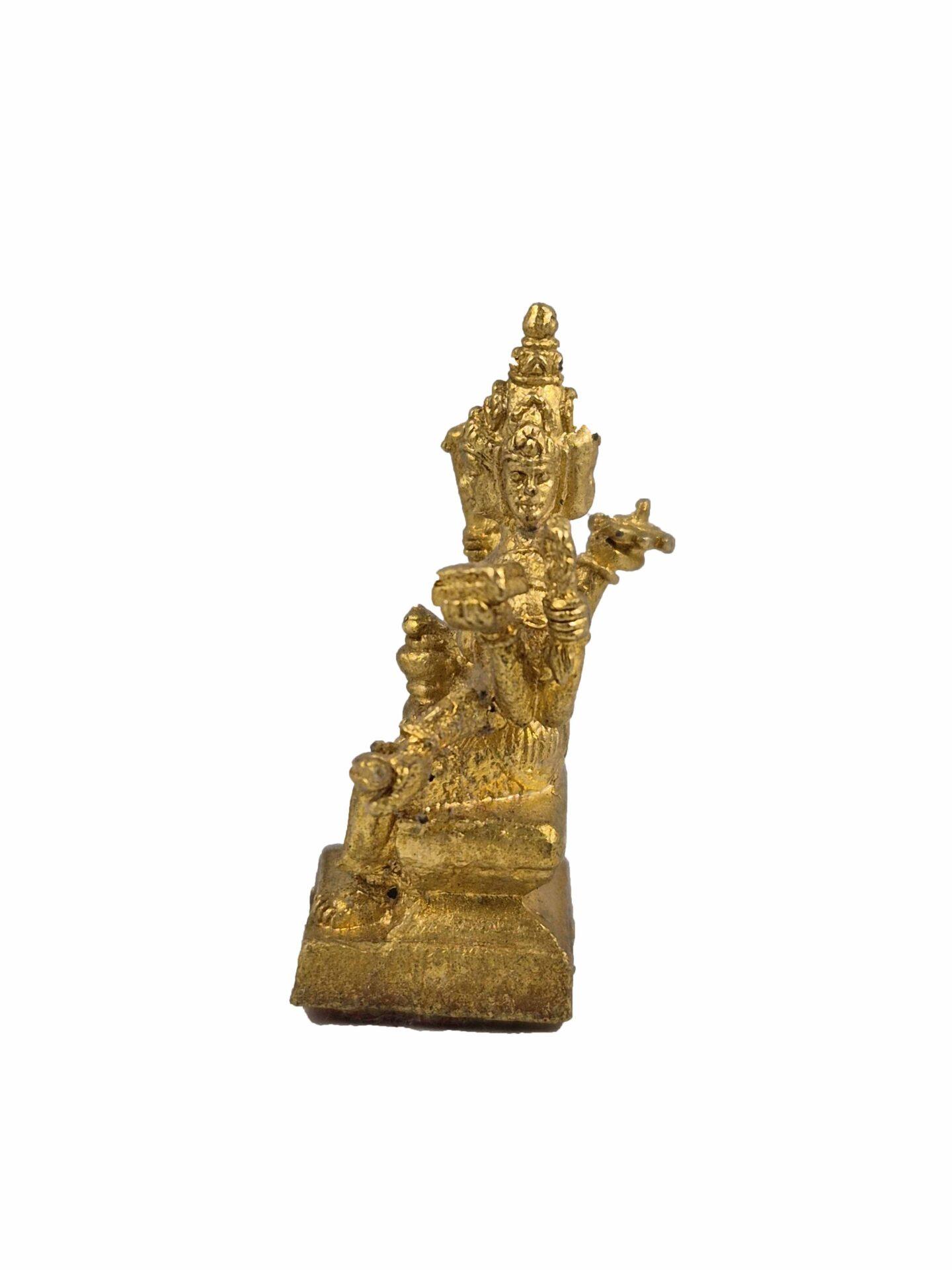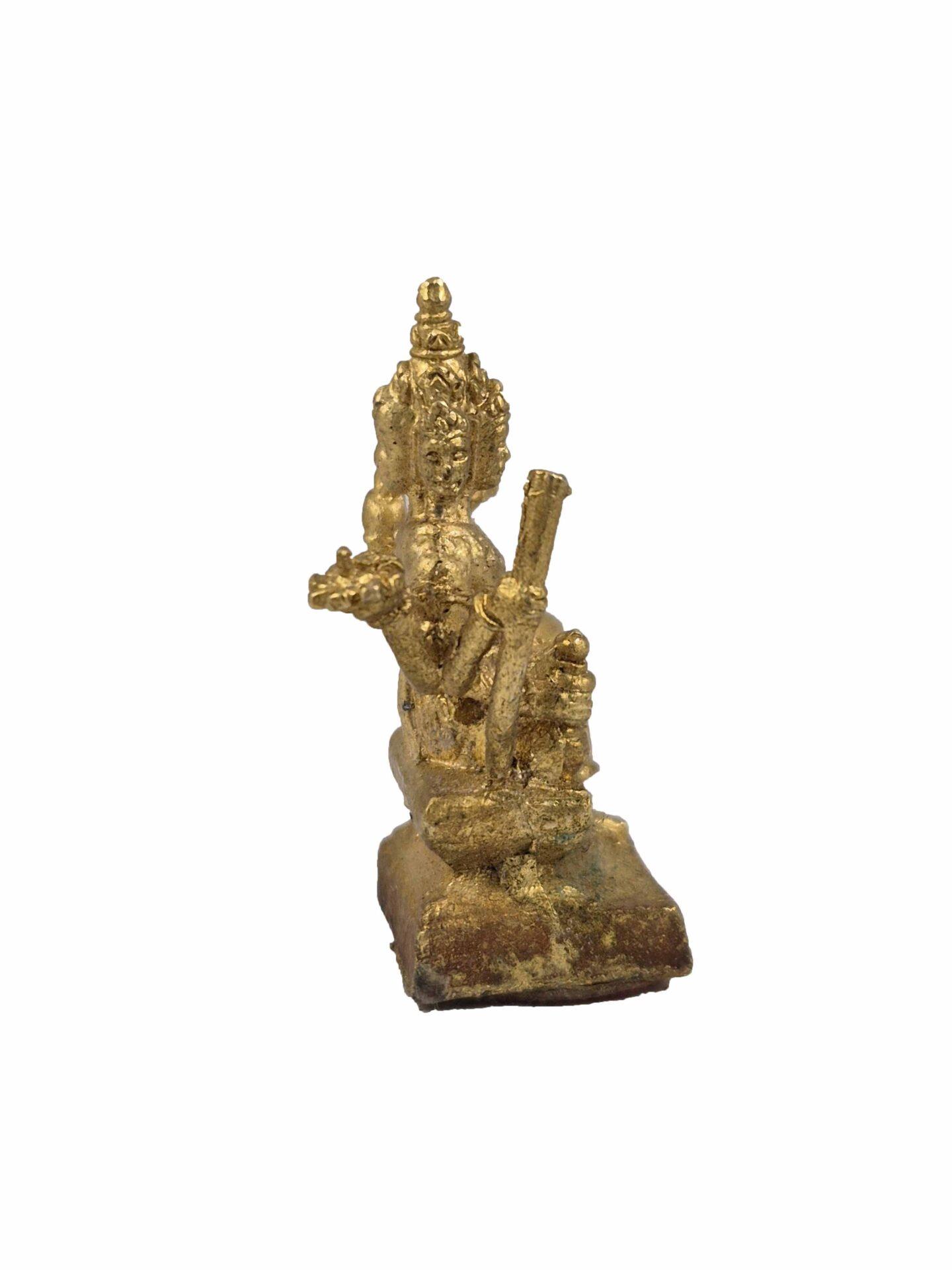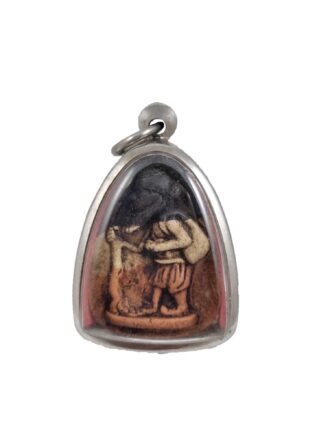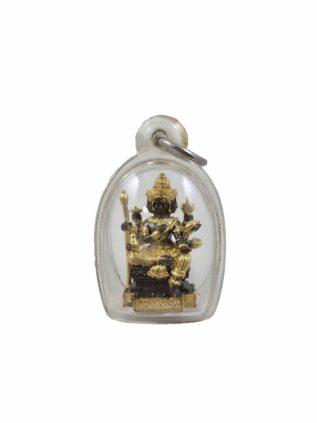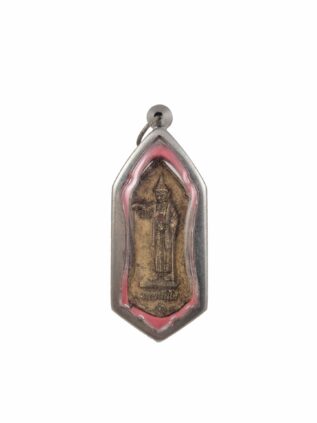Description
Phra Phrom is the Thai representation of the Hindu god Brahma, known as the creator deity in the Hindu trinity (or Trimurti), which also includes Vishnu the preserver, and Shiva the destroyer. Over time, Brahma’s veneration spread across various cultures, adopting unique characteristics and roles in each tradition. In Thailand, Phra Phrom is particularly revered and has a distinct place in both religious and popular practices.
Typically, Phra Phrom is depicted as a four-faced deity, with each face symbolizing different aspects of his benevolence and authority. The four faces are believed to watch over the four cardinal directions, ensuring protection and prosperity over the land. He is often seen sitting cross-legged on a pedestal, with each of his four hands holding sacred items, such as scripture, mala (rosary), water jug, and scepter.
In Thailand, Phra Phrom is widely associated with fortune and prosperity. Many businesses, from small stalls to grand hotels, host shrines dedicated to him, seeking his blessings for success and abundance. It’s common to see devotees offering flowers, incense, and candles to these shrines, accompanied by traditional Thai dance performances as a mark of respect and gratitude.
One of the most famous Phra Phrom statues is located in the Erawan Shrine in Bangkok, a bustling landmark visited by both locals and tourists. The shrine is a testament to Phra Phrom’s significance in Thai daily life, with many visitors praying for good fortune, protection, and success in their endeavors.
It’s noteworthy to mention the syncretic nature of Phra Phrom’s veneration. Although originating from Hindu traditions, his worship in Thailand merges seamlessly with Buddhist practices. This blending of faiths showcases Thailand’s rich tapestry of cultural and religious influences and highlights the adaptability and resilience of religious symbols across different cultures.
In conclusion, Phra Phrom stands as a powerful symbol of prosperity, protection, and benevolence in Thai culture. As a bridge between ancient Hindu traditions and contemporary Thai practices, his veneration offers a window into the interconnectedness of Southeast Asian religious landscapes.
